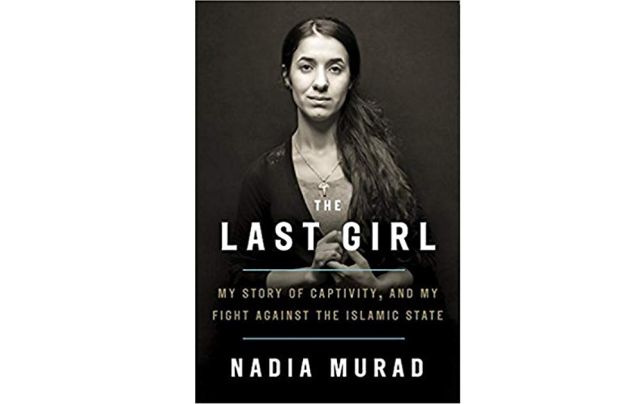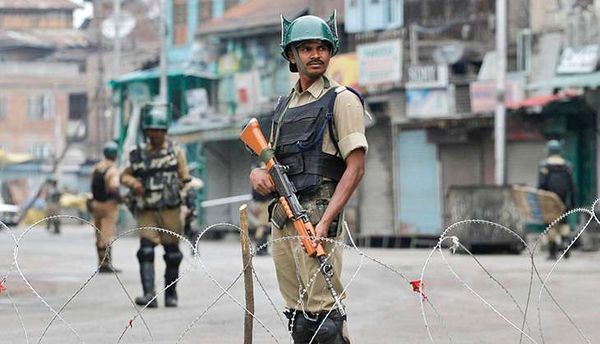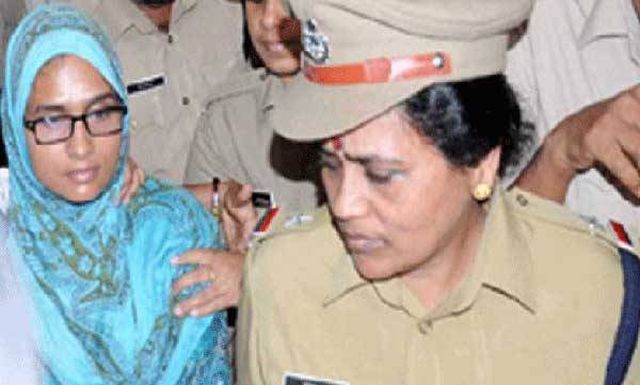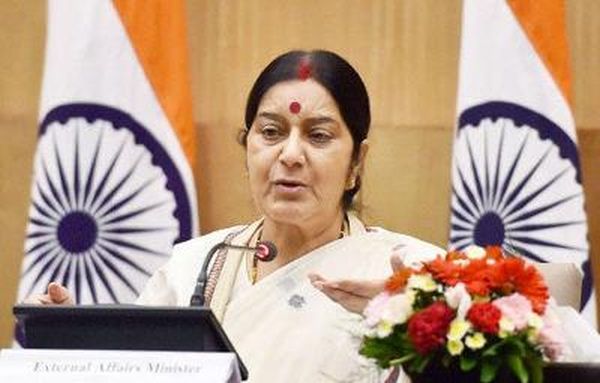
by Editor | May 25, 2021 | Books
 By Saket Suman,
By Saket Suman,
Book: The Last Girl; Author: Nadia Murad; Publisher: Vergo Press/Hachette India; Pages: 306; Price: Rs 499
She suffered at the hands of the Islamic State, was held captive as a sex slave, but went on to become a human rights campaigner and was awarded the 2018 Nobel Peace Prize jointly with Congolese gynaecologist Denis Mukwege. In her memoir, “The Last Girl”, Nadia Murad recalls the dreadful sequence of events that led to her captivity and reflects on the life she has been leading thereafter.
It is a painful story, of a life shattered all of a sudden, that left Murad with little hope of freedom. But it inspired her to visualise a change in the world — with the powerful weapon of her own story as the instrument of change.
In August 2014, Islamic State militants laid siege on Murad’s village, Kocho, in Iraq. The militants showed no mercy and first executed almost all the men and older women, which included Murad’s mother and six brothers. All of them were buried in mass graves as younger women like Murad, who were spared, looked on hopelessly.
The younger women were then kidnapped by the IS militants and were sold as sex slaves, where they were held captive, tortured and raped by several militants. She was barely 21 years old, but the militants knew no mercy.
“The slave market opened at night. We could hear the commotion downstairs where militants were registering and organising, and when the first man entered the room, all the girls started screaming. It was like the scene of an explosion. We moaned as though wounded, doubling over and vomiting on the floor, but none of it stopped the militants,” she recalls in the memoir, first published in the United Kingdom by Virgo Press, and now here by Hachette India.
She adds that the militants paced around the room, staring at them, while they screamed and begged.
“They gravitated toward the most beautiful girls first, asking, ‘How old are you?’ and examining their hair and mouths. ‘They are virgins, right?’ they asked a guard, who nodded and said, ‘Of course!’ like a shopkeeper taking pride in his product. Now the militants touched us anywhere they wanted, running their hands over our breasts and our legs, as if we were animals,” Murad recounts.
After she was sold to a jihadist in Mosul, an opportunity to escape arrived when she found the front door unlocked. Murad escaped to Kurdistan, posing as the wife of a Sunni man, Nasser, who literally risked his life and everything he had to take her to safety.
But the relief did not last long as Murad and Nasser were detained by Kurdish officials and forced to testify about their escape.
“I was quickly learning that my story, which I still thought of as a personal tragedy, could be someone else’s political tool,” she notes.
In early 2015, Murad went as a refugee to Germany and later that year she began to campaign to raise awareness of human trafficking. She was invited to Switzerland to speak at a UN forum on minority issues.
“It was the first time I would tell my story in front of a large audience. I wanted to talk about everything — the children who died of dehydration fleeing ISIS, the families still stranded on the mountain, the thousands of women and children who remained in captivity, and what my brothers saw at the site of the massacre.
“I was only one of hundreds of thousands of Yazidi victims. My community was scattered, living as refugees inside and outside of Iraq, and Kocho was still occupied by ISIS. There was so much the world needed to hear about what was happening to Yazidis,” she writes.
In the memoir, Murad maintains that her story, “told honestly and matter-of-factly”, is the best weapon she has against terrorism. She emphasises that she plans on using it until the terrorists are put on trial, and reminds those in power that there is still so much that needs to be done. She urges the world leaders, particularly Muslim religious leaders, to stand up and protect the oppressed.
Murad says in the book that she wishes to look into the eyes of the men who raped her and see them brought to justice. And she is vocal about her sufferings as well as what she wants the authorities to do because she, as the title of her memoir says, wants to be “The Last Girl” with a story like hers.
(Saket Suman can be contacted at saket.s@ians.in)
—IANS

by Editor | May 25, 2021 | Books
 By Vikas Datta,
By Vikas Datta,
Title: The Way of the Strangers – Encounters with the Islamic State; Author: Graeme Wood; Publisher: Penguin Random House; Pages: 352; Price: Rs 499
It is very easy to dismiss terrorists, especially those of a fundamentalist religious persuasion, as a group of savages in unstable or failed states distorting their faith for their own purposes. But can this approach be applicable to the Islamic State (IS), or suggest how we can tackle its growing global threat?
The approach is totally wrong, argues journalist and academician Graeme Wood — and not only for the IS. As we have known from the “Global War on Terrorism”, America and its allies ignored the fact that ideologies cannot be fought militarily, but by proving they are wrong or that better ideas are available.
However, in the case of the Islamic State, says Wood, it is not that its adherents’ view of Islam is wrong, for all its usual activities — slavery, mutilation and extreme violence against non-Muslims and “apostate” Muslims (Shias, Sunnis, Sufis, secular, “insufficiently Islamic”, etc) who oppose them — are based on Islamic scripture and practice (in the faith’s initial days though).
Though a minority, uncompromising and apocalyptic view, it is Islamic — though a mindset not shared by the vast mainstream of Muslims, who seek to describe it as a travesty of their religion, he shows.
Then, given the number of educated professionals the IS has been recruiting from affluent and modern Western societies and elsewhere, it definitely strikes a chord among some in the Muslim community at large, he says.
“The breadth of the appeal of the Islamic State was shocking as its depth. Three generations of conservative Muslims from outside London, a skirt-chasing bachelor from South Australia, and tens of thousands of others had drunk their inspiration from the same fountains. In addition to the physical caliphate, with its territory and war and economy to run, there was a caliphate of the imaginations to which all these people had already emigrated long before they slipped across the Turkish border…”
And all these had been “persuaded by the same propaganda, and, in many cases, the same people”, argues Wood.
It is accounts of interactions with some of these people — spread over Egypt, Japan, Australia, the Philippines’ Mindanao, Britain, the US, including in Dallas (a short distance from the author’s own childhood home), and spanning an Egyptian tailor, who once worked in New York and stitched a suit for Paul Newman, an Italian-origin Australian who is now the top Islamist firebrand Down Under, a mild Japanese academician, a British IS apologist — though with no intention of travelling to its territory, among others, he uses in his bid to explain the IS phenomenon.
Woven in are the theology and theologians of the Islamic State, the role of former Baathists, its difference from its jihadi forebear, Al Qaeda and other Islamist parties, and a concise but incisive narration of Islam’s rifts and challenges that helped give birth to such ideologies.
Furnishing his accounts of interactions with these characters, the “visible surface of a cause that was stirring emotions and convictions of tens of millions of others, and that would continue them for decades to come, even if it lost its core territory in Syria and Iraq”, Wood also provides insights into IS’ influencing and recruiting techniques — e.g., focussing on the most incongruous, not pious possibilities, and others.
While he wonders at the jarring prospect of smart, even gentle and well-mannered, intelligent people with the most wicked beliefs”, he however tells us that “when someone says something too evil to believe, one response is not to doubt their sincerity but to expand one’s capacity to imagine what otherwise decent people can desire”.
That, he holds, is the “proper response” to the Islamic State, but while stressing understanding what primes it rather than advocating steps to combat it, Wood also admits that “the tragedy is that even those inverted visionaries who live to realise their error will never be able to undo the misery they have inflicted on so many others”.
However, despite Wood’s thesis of how the Islamic State has its roots in Islam, this is no anti-Muslim rant, but rather a warning — for other Semitic as well as other faiths — on how an uncompromising attitude on reprising past practice of a religion, even in different contemporary circumstances, is a definite recipe for bloodshed and strife.
(Vikas Datta can be contacted at vikas.d@ians.in)
—IANS

by Editor | May 25, 2021 | News, Politics
 New Delhi : With the Kashmir Valley enveloped by rising violence, the Indian Army on Friday said it would prioritize bringing radicalized youth to the mainstream through a “collective approach” and convince militants to “shun violence and gun culture”.
New Delhi : With the Kashmir Valley enveloped by rising violence, the Indian Army on Friday said it would prioritize bringing radicalized youth to the mainstream through a “collective approach” and convince militants to “shun violence and gun culture”.
The issue of conducting de-radicalizing exercises along with counter-terror operations in the Kashmir Valley was discussed during the ongoing biannual Army Commanders’ Conference that began here on Monday amid reports that Islamic State ideology was moulding new-age militants in the state.
“It was felt that priority must be accorded towards ushering peace by conducting counter-terrorist operations that minimize collateral damage. Radicalized youth must be brought into the mainstream by carrying out de-radicalization and collective approach that focuses on convincing the youth to shun violence and gun culture,” Director General Staff Duties Lt. Gen. A.K. Sharma told reporters.
Lt. Gen. Sharma, who earlier headed Nagrota-based 16 Corps in Jammu, didn’t explain what kind of exercise the Army would employ to de-radicalize Kashmiri youth who appear to be getting influenced by Islamic State ideology amid heightened violence in the Valley.
Staring at yet another possible hot summer with hundreds of militants and many civilians already killed in the first three and a half months of this year, dozens of youths in Kashmir have reportedly joined three prominent militant groups: Hizb-ul-Mujahideen, Lashkar-e-Taiba and a resurgent Jaish-e-Mohammad.
These groups have been historically linked to Pakistan and largely favour a merger of Jammu and Kashmir with Pakistan.
But new-age militants, including those from Ansar Ghazwat ul Hind of former Hizb commander Zakir Musa, have openly favoured pan-Islamism over nationalist goals, seeking “martyrdom or imposition of sharia” and declared jihad against not only India but “apostate” Pakistan too.
Though there is no concrete data available to prove the Islamic State’s physical presence in Kashmir, its online propaganda and the way it is influencing young Kashmiris indicate that the global terror group may have Kashmir ambitions at the very least.
Top Army commanders during the six-day conference that ends on Saturday also discussed the current situation along the borders with China and Pakistan, particularly “along the Line of Control, the increase in ceasefire violations and the adequacy of the response mechanisms”, said Lt. Gen. Sharma
“The apex commanders confabulated on the prevalent situation in the Valley and reviewed the recent developments affecting modus operandi of the operations of the armed forced deployed in the region,” he said, referring to the trend of civilians rushing to shootout sites to hurl stones at security forces in a bid to help militants escape.
The senior commanders, he said, also deliberated at length on the prevailing situation along the northern borders.
“During the conference, considerable time was spent on re-prioritizing the existing requirements to ensure that the resources allocated for force modernization and capacity building were utilized optimally with the budgetary allocation. The discussions also dwelt upon increasing the content of indigenization in force modernization.”
On the last day of the conference, the commanders would deliberate on matters pertaining “exclusively to military operations”, he said.
—IANS

by Editor | May 25, 2021 | News
 Kochi (Kerala) : An NIA court here on Saturday sentenced a woman from Bihar to seven years in jail in the first Islamic State (IS) case registered in Kerala.
Kochi (Kerala) : An NIA court here on Saturday sentenced a woman from Bihar to seven years in jail in the first Islamic State (IS) case registered in Kerala.
The case is in connection with 15 persons from Kasargode district who travelled to Afghanistan to join the terror group in 2016.
Yasmin Mohammed Zahid was arrested in Delhi July 30, 2016, when she on her way to leave for Afghanistan with her child.
The case was first registered by the Kerala Police in Kasargode. It was later taken over by the National Investigation Agency.
The agency found evidence of the accused persons activities through their social media accounts.
—IANS

by Editor | May 25, 2021 | News, Politics
 New Delhi : Thirty-nine Indians kidnapped by the Islamic State (IS) terror group in Iraq’s Mosul in 2014 are dead, External Affairs Minister Sushma Swaraj said on Tuesday.
New Delhi : Thirty-nine Indians kidnapped by the Islamic State (IS) terror group in Iraq’s Mosul in 2014 are dead, External Affairs Minister Sushma Swaraj said on Tuesday.
The minister confirmed the deaths in the Rajya Sabha and said the mortal remains will be brought back to India by Union Minister of State for External Affairs V.K. Singh.
“General V.K. Singh will go to Iraq to bring back the mortal remains of the Indians killed in Iraq. The plane carrying the mortal remains will first reach Amritsar, then Patna and then go to Kolkata,” Sushma Swaraj said.
She said the bodies were spotted using deep penetration radar and were exhumed from mass graves.
Their identities were confirmed by DNA tests.
“The bodies were brought to Baghdad for DNA testing. The DNA of 38 Indians have been matched.
“For verification of the bodies, DNA samples of their relatives were sent there. Four state governments — Punjab, Himachal Pradesh, West Bengal and Bihar — were involved in the process,” the minister said.
The victims — 31 from Punjab, four from Himachal Pradesh and four from Bihar and West Bengal — were construction workers and were employed by an Iraqi company in Mosul.
They were taken hostage when the IS took control of Mosul, the second largest city in Iraq. The workers were trying to leave Mosul when they were taken hostage.
Sushma Swaraj also dismissed claims of Harjeet Massi, one of them who escaped from Mosul.
“He was not willing to tell me how he escaped,” she said.
The minister said that she had concrete evidence that he was lying.
Massi had escaped along with Bangladeshis with the help of a caterer with a fake name ‘Ali’, she said.
She said the details were revealed to her by Massi’s employer and the caterer who helped him.
In July 2017, Sushma Swaraj had said that she would not declare the 39 Indians dead without concrete proof or evidence.
—IANS





